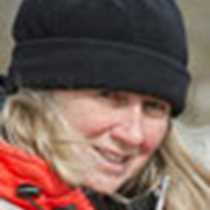Thomas Bay and Petersburg, Southeast Alaska
We seek the warmth of the sunshine like lizards on a rock. Its heat is comfort for the human soul. But to a plant its energy is life itself and then to us this power flows as food, directly or processed by another living form.
In Alaska, clouds generally rule the sky. The towering forest canopy filters any remaining incoming rays. Strategy is needed to snatch one’s share to fuel the photosynthetic machine. Leaves mimicking those from giant maple trees position themselves in whorls on scrawny branches armed with spines. Not one shades the other. There is no wasted tissue there. The well designed factory produces well, so well that herbivores might be surely tempted to devour these platters of green. But each is well defended. Spines march up the petioles and along each netted vein. They reach out to grab at us as we walk by or appear as the only hand hold on a narrow trail. But we have learned to recognize this devil of a plant and have come to appreciate the many gifts it can bestow on mankind. Devil’s club (Oplopanax horridus) has proven itself worthy as a medicinal plant.
But today no plan was needed to gather the rays from the sun. Blue skies greeted us early as we inched into Thomas Bay. The few clouds about were snagged on the sharp peaks of the Coast Mountains. To our north, Baird Glacier flowed from its valley glimmering white as new fallen snow although its face was thinned and wasting. Wispy fingers of fog stretched from valleys. We slid through the narrow passage into Scenery Cove and woke to the sound of the wilderness. The whirling whistles of marbled murrelets blended with the pitiful kee-kee call of an eagle. Two loons drifted beside us, content to listen rather than adding their haunting call.
At Cascade Creek the sunlight turned the spray from a waterfall to diamonds. Volumes of water boiled over huge boulders and thundered as it fell. An American dipper dashed from churning pool to frothing puddle preparing itself to plunge into the icy water in search of invertebrate prey. We climbed to the top on steep rising stairs and stood above the cascade absorbing the rhythm of the waters.
The folks in Petersburg were enjoying the summer sun as well, although the clouds were beginning to reclaim their rule. We scattered in all directions by land and sea and air, collecting experiences and memories to share over the festive evening meal. Some recounted encounters with bog dwelling carnivorous plants while others discussed the fishing industry. For others flights over Patterson and Le Conte Glaciers provided the “big picture” view to make sense of these moving rivers of ice.
As the evening light was altered by clouds of pink, we sailed once again into Frederick Sound, filled with expectation of new adventures to come.
We seek the warmth of the sunshine like lizards on a rock. Its heat is comfort for the human soul. But to a plant its energy is life itself and then to us this power flows as food, directly or processed by another living form.
In Alaska, clouds generally rule the sky. The towering forest canopy filters any remaining incoming rays. Strategy is needed to snatch one’s share to fuel the photosynthetic machine. Leaves mimicking those from giant maple trees position themselves in whorls on scrawny branches armed with spines. Not one shades the other. There is no wasted tissue there. The well designed factory produces well, so well that herbivores might be surely tempted to devour these platters of green. But each is well defended. Spines march up the petioles and along each netted vein. They reach out to grab at us as we walk by or appear as the only hand hold on a narrow trail. But we have learned to recognize this devil of a plant and have come to appreciate the many gifts it can bestow on mankind. Devil’s club (Oplopanax horridus) has proven itself worthy as a medicinal plant.
But today no plan was needed to gather the rays from the sun. Blue skies greeted us early as we inched into Thomas Bay. The few clouds about were snagged on the sharp peaks of the Coast Mountains. To our north, Baird Glacier flowed from its valley glimmering white as new fallen snow although its face was thinned and wasting. Wispy fingers of fog stretched from valleys. We slid through the narrow passage into Scenery Cove and woke to the sound of the wilderness. The whirling whistles of marbled murrelets blended with the pitiful kee-kee call of an eagle. Two loons drifted beside us, content to listen rather than adding their haunting call.
At Cascade Creek the sunlight turned the spray from a waterfall to diamonds. Volumes of water boiled over huge boulders and thundered as it fell. An American dipper dashed from churning pool to frothing puddle preparing itself to plunge into the icy water in search of invertebrate prey. We climbed to the top on steep rising stairs and stood above the cascade absorbing the rhythm of the waters.
The folks in Petersburg were enjoying the summer sun as well, although the clouds were beginning to reclaim their rule. We scattered in all directions by land and sea and air, collecting experiences and memories to share over the festive evening meal. Some recounted encounters with bog dwelling carnivorous plants while others discussed the fishing industry. For others flights over Patterson and Le Conte Glaciers provided the “big picture” view to make sense of these moving rivers of ice.
As the evening light was altered by clouds of pink, we sailed once again into Frederick Sound, filled with expectation of new adventures to come.




